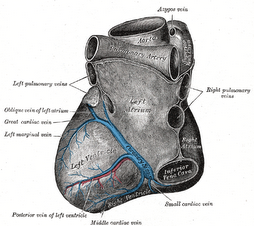 Characteristics:
Characteristics:
This is an extremely rare tachycardia which occurs when a single sinus impulse conducts down an AV node with both a slow and fast pathway. When most impulses reach the AV node they conduct down both the slow and fast pathway. Since conduction is faster down the fast pathway it beats out the slow pathway conduction and depolarizes the ventricle. The impulse traveling down the slow pathway either collides with the impulse from the fast pathway that is now traveling back up the slow or the impulse traveling down the slow pathway reaches the ventricle and finds the ventricle refractory. In the above EKG the sinus impulse represented by the P wave in the beginning of the rhythm strip conducts down the fast pathway resulting in the first QRS complex; the impulse from the slow pathway also depolarizes the ventricle seen as the second QRS complex. You will notice that there is no p wave between the first and second QRS complexes. Therefore the first sinus beat results in a doubling of the ventricular sinus rate. This sequence is repeated again in the 7th and 8th QRS complex. It is an extremely rare tachycardia and is resistant to multiple antiarrhythmic medications. The above patient underwent ablation of their slow pathway and no further episodes were observed. See www.askdrwiki.com for more interesting EKGs.
Sunday, March 18, 2007
EKG of the Week:Non Reentrant Fast/Slow Supraventricular Tachycardia
Subscribe to:
Post Comments (Atom)


No comments:
Post a Comment